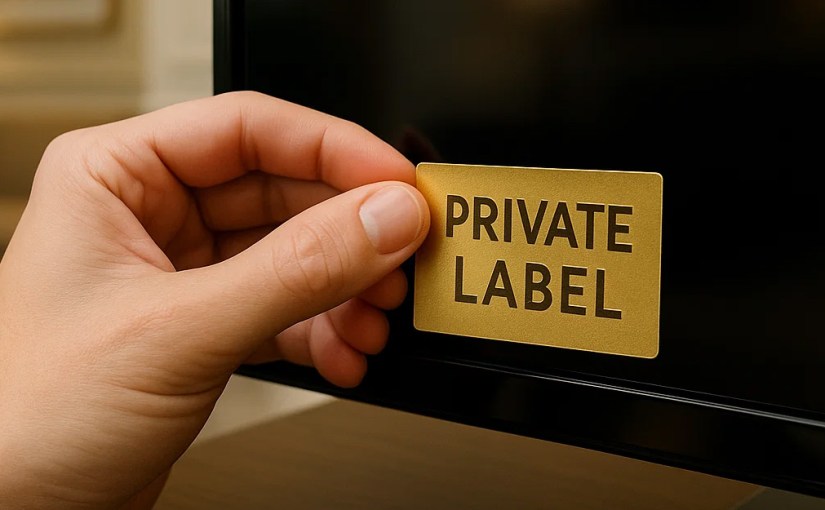The media world is undergoing one of its most consequential shifts in decades, and nothing illustrates that better than the recent hostile bid by Paramount Skydance to acquire Warner Bros. Discovery. At first glance, the bid appears to be about content libraries, blockbuster franchises, and owning more streaming capacity. But beneath the surface lies a deeper truth shaping the entire industry:
In an era where content is everywhere, the real power lies in owning distribution and controlling the message.
As legacy media firms engage in multibillion-dollar fights for scale, a quieter but equally significant shift is happening across retail, healthcare, hospitality, and public venues. Businesses are realizing that controlling the messaging on the screens inside their own spaces—screens their customers see every day—is becoming a powerful strategic asset. And investors are increasingly turning their attention toward companies that enable these environments.
The Paramount Hostile Bid: A Battle Over Attention and Influence
When Paramount Skydance made its unsolicited offer to acquire Warner Bros. Discovery, analysts quickly noted that the value of the deal extends beyond owning movies, series, and networks. Paramount’s leadership highlighted that their bid offered a “more certain and quicker path to completion,” while industry observers saw something more: a move to consolidate power over how and where media reaches audiences.
The consolidation underscores a shift occurring at the highest levels of media strategy: control over distribution channels is becoming just as important—if not more important—than the content itself.
Yet, even as media giants merge to control broadcast networks, streaming platforms, and cable channels, one area is growing almost entirely outside the traditional media ecosystem: privately controlled, branded TV networks inside real-world businesses. And platforms like It’s Relevant TV are quietly enabling this transformation.
The Rise of Real-World Message Control
Businesses today face a unique challenge. Customers are inundated with messages from every direction—social media, online ads, streaming platforms, and public signage. But the moment a customer steps inside a business’s physical space, the business has a rare advantage: it can control the environment and the messaging without letting in the outside noise.
This is where It’s Relevant TV has become an invaluable resource. Unlike ad-supported TV and digital signage tools, It’s Relevant TV allows businesses to deploy:
- fully branded, white-labeled TV networks
- custom programming curated from an enormous content library
- their own internal messaging, promotions, and educational content
- non-repetitive, non-looping content that keeps viewers engaged
The result is a controlled media environment that reflects the brand, informs the customer, and enhances the experience—all without selling a single outside advertisement. To the viewer, these networks look entirely like the business’s own private channel.
White-Labeled Networks: An Invisible but Powerful Media Layer
One of the most compelling aspects of It’s Relevant TV is how businesses routinely use it to power retail and in-location TV networks that appear to be built in-house. Many shoppers today don’t realize that the branded channels playing inside the stores they visit—the channels featuring custom content, promotions, and entertainment—are actually powered by It’s Relevant TV behind the scenes.
In a media environment increasingly concerned with authenticity, brand control, and customer experience, this model delivers something traditional networks cannot: complete ownership of the message from start to finish.
Instead of inserting third-party ads or competing commercial content, It’s Relevant TV ensures the message on the screen belongs entirely to the business. It gives organizations the ability to:
- Showcase their brand identity consistently
- Educate and inform customers about offerings
- Reduce perceived wait times in service environments
- Build customer loyalty and trust
- Eliminate noise and distraction from outside advertisers
For companies with dozens or even thousands of locations, this becomes a powerful, scalable media distribution channel—one that investors increasingly view as a valuable asset.
Why Investors Are Paying Attention to Message-Control Platforms
Traditional media companies face challenges that It’s Relevant TV’s model sidesteps entirely: expensive content production, volatility in advertising markets, licensing battles, regulatory scrutiny, and increasing competition from streaming giants. Meanwhile, real-world media networks—especially those controlled directly by businesses—offer:
- Stable, predictable engagement
- Scalable distribution without massive content costs
- Consistent viewer attention in captive environments
- Stronger brand alignment and loyalty
- No dependence on third-party advertisers
This is why private, controlled networks are becoming more attractive to investors. They represent a future where businesses don’t have to share attention, interrupt their message with unrelated advertising, or rely on outside media companies to shape the customer experience.
In essence, It’s Relevant TV is enabling businesses to become their own media companies—without the complexity or cost of building a network from scratch.
How Industry Consolidation Benefits It’s Relevant TV
As large media giants merge and shrink in number, businesses seeking control of their in-store messaging increasingly turn to alternatives outside the traditional media ecosystem. It’s Relevant TV offers exactly what those businesses need: a platform that gives them ownership of their message without inserting third-party commercial interests.
While Paramount, Netflix, and other media giants chase billions of dollars in content and distribution consolidation, the real growth story may lie elsewhere—in the expansion of private media networks owned by businesses themselves and powered quietly by It’s Relevant TV.
This shift is accelerating, and investors are beginning to recognize the value of companies that:
- Enable brand-controlled messaging across thousands of screens
- Operate outside the risks of advertising-driven revenue models
- Provide infrastructure powering hundreds of white-labeled networks
- Scale through distribution rather than expensive content production
The Future of Media Will Be More Distributed—and More Private
While the big players fight for dominance in streaming and cable, the rise of private messaging networks inside businesses represents a quieter revolution. The future of media control will not belong only to massive studios or global streamers—but also to the retailers, hospitals, gyms, restaurants, and service providers building their own in-location media channels.
And many of those networks, whether the public realizes it or not, will be powered by It’s Relevant TV.






